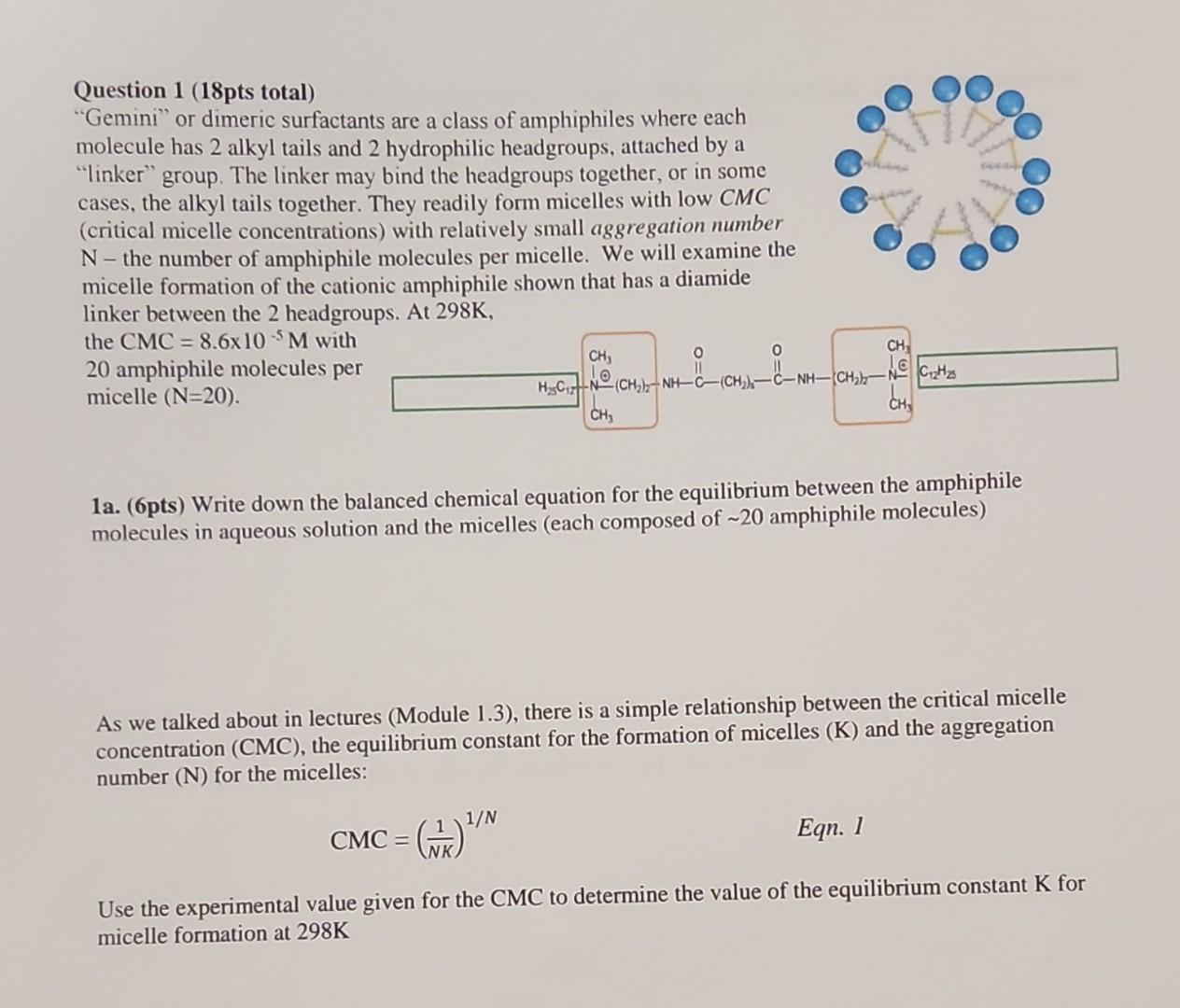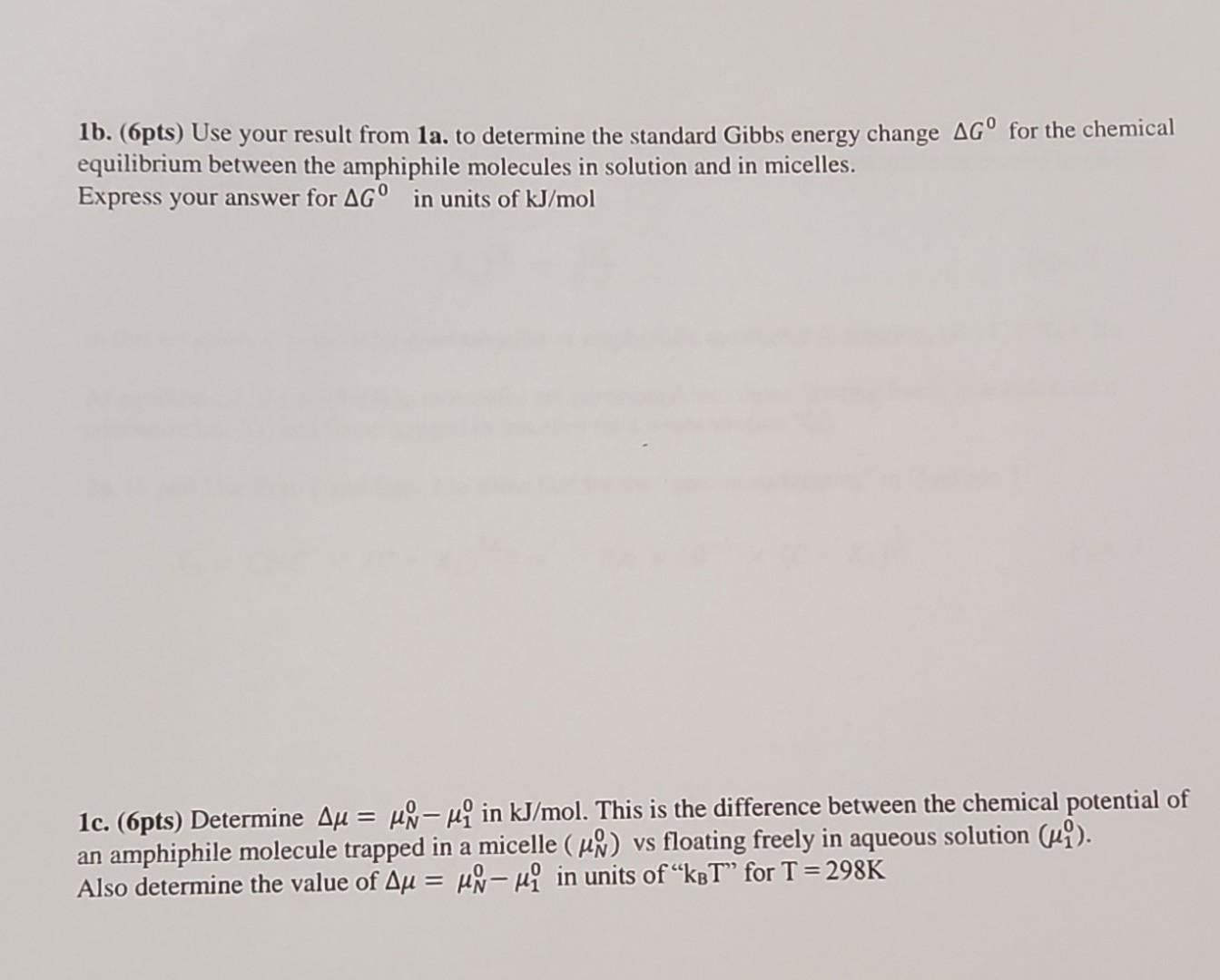Answered step by step
Verified Expert Solution
Question
1 Approved Answer
Question 1 (18pts total) Gemini or dimeric surfactants are a class of amphiphiles where each molecule has 2 alkyl tails and 2 hydrophilic headgroups, attached


Question 1 (18pts total) "Gemini" or dimeric surfactants are a class of amphiphiles where each molecule has 2 alkyl tails and 2 hydrophilic headgroups, attached by a "linker" group. The linker may bind the headgroups together, or in some cases, the alkyl tails together. They readily form micelles with low CMC (critical micelle concentrations) with relatively small aggregation number N - the number of amphiphile molecules per micelle. We will examine the micelle formation of the cationic amphiphile shown that has a diamide linker between the 2 headgroups. At 298K. the CMC=8.6105M with 20 amphiphile molecules per micelle (N=20). 1a. (6pts) Write down the balanced chemical equation for the equilibrium between the amphiphile molecules in aqueous solution and the micelles (each composed of 20 amphiphile molecules) As we talked about in lectures (Module 1.3), there is a simple relationship between the critical micelle concentration (CMC), the equilibrium constant for the formation of micelles (K) and the aggregation number (N) for the micelles: CMC=(NK1)1/N Eqn. 1 Use the experimental value given for the CMC to determine the value of the equilibrium constant K for micelle formation at 298K 1b. (6pts) Use your result from 1a. to determine the standard Gibbs energy change G0 for the chemical equilibrium between the amphiphile molecules in solution and in micelles. Express your answer for G0 in units of kJ/mol 1c. (6pts) Determine =N010 in kJ/mol. This is the difference between the chemical potential of an amphiphile molecule trapped in a micelle ( N0) vs floating freely in aqueous solution (10). Also determine the value of =N010 in units of " kBT " for T=298K
Step by Step Solution
There are 3 Steps involved in it
Step: 1

Get Instant Access to Expert-Tailored Solutions
See step-by-step solutions with expert insights and AI powered tools for academic success
Step: 2

Step: 3

Ace Your Homework with AI
Get the answers you need in no time with our AI-driven, step-by-step assistance
Get Started


